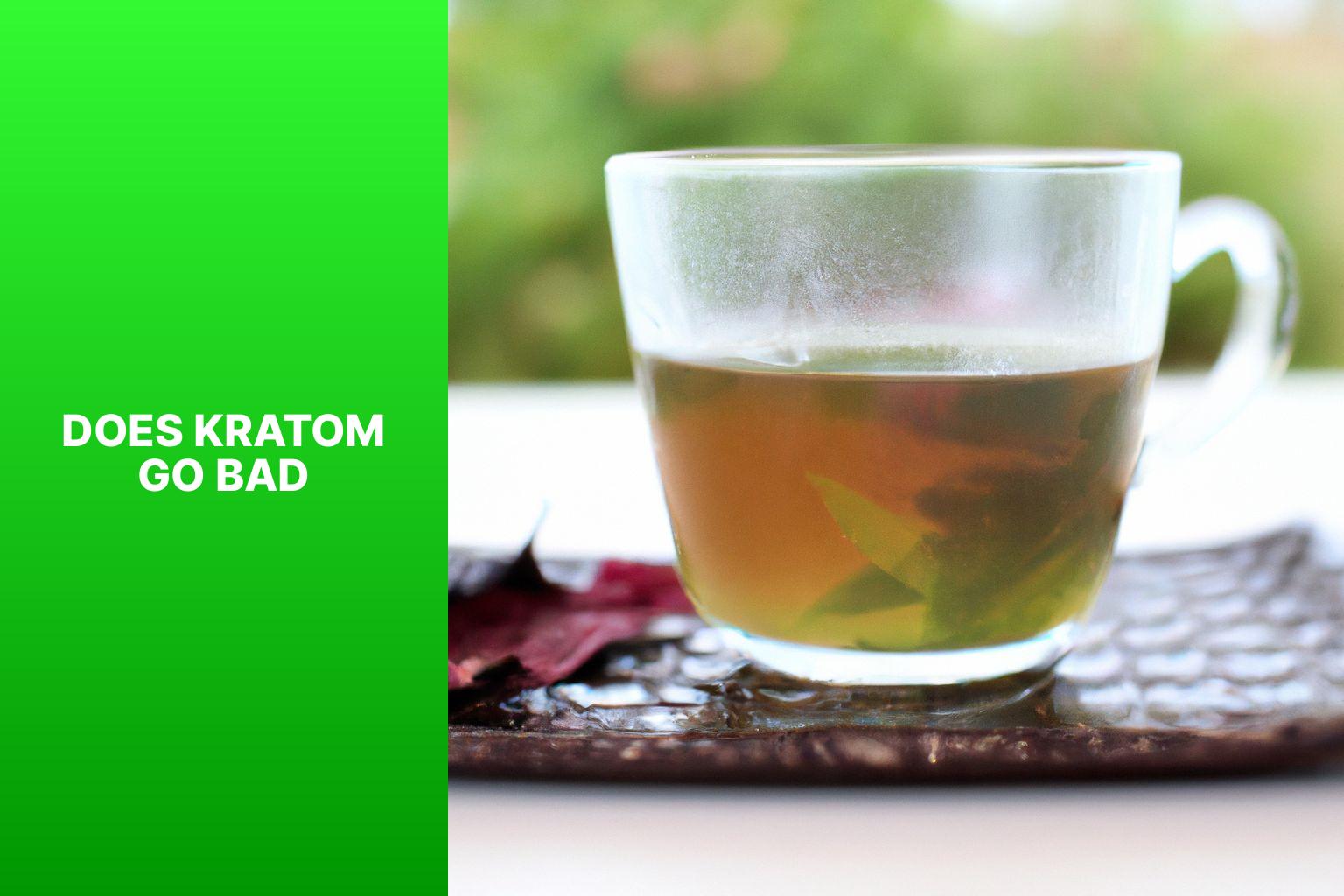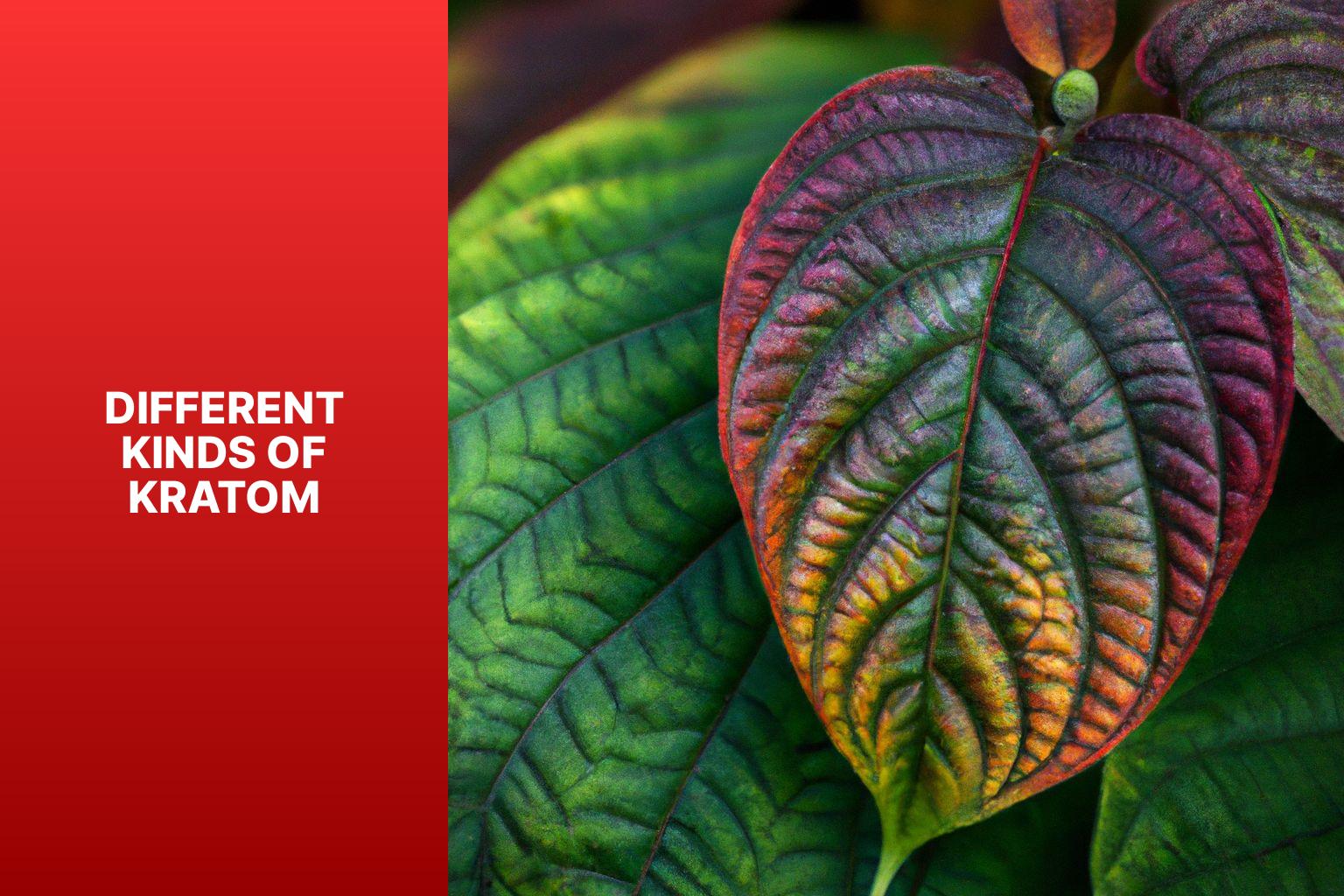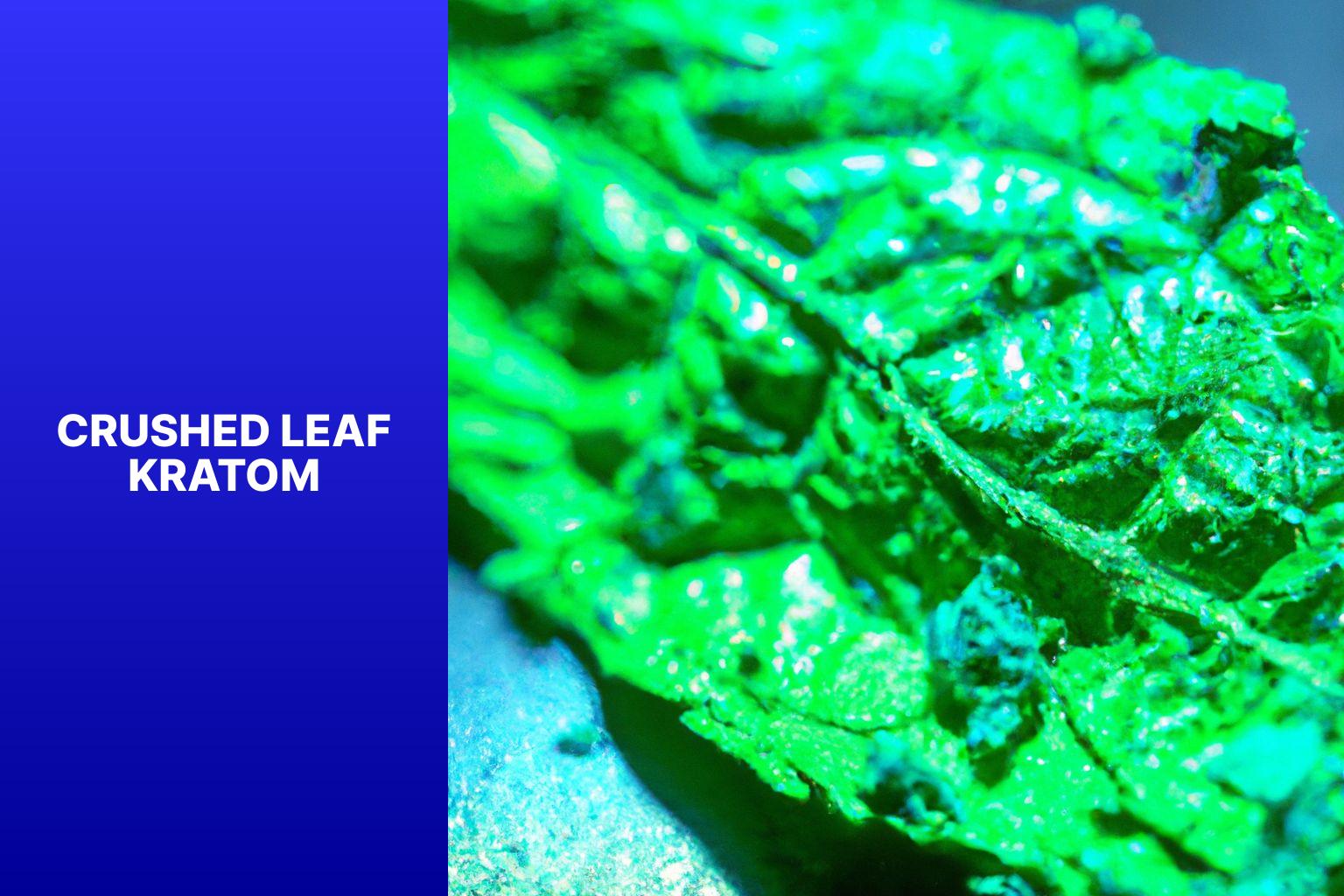Does Kratom Go Bad? Exploring the Shelf Life & Storage of Kratom
Kratom, a tropical evergreen tree native to Southeast Asia, has gained popularity for its potential health benefits and recreational usage. Like any organic substance, kratom does have a shelf life. Understanding the expiration of kratom is essential to ensure its effectiveness and safety when consumed. In this article, we will explore the concept of kratom expiration and how to properly store it to maintain its quality.
Before delving into the expiration of kratom, let’s first understand what kratom is. Kratom, scientifically known as Mitragyna speciosa, is a plant that belongs to the coffee family and is known for its alkaloid content that can interact with the body’s opioid receptors. It is commonly consumed as a powder, capsule, or brewed into a tea for its stimulating or sedating effects.
One of the primary concerns for kratom users is whether kratom, like other natural products, can expire. While kratom does not necessarily have an expiration date, there are factors that can affect its shelf life and potency. These factors include the quality of the kratom, the way it is stored, and environmental conditions.
To ensure the longevity of kratom, proper storage is crucial. By following a few simple guidelines, you can preserve the freshness and potency of your kratom supply. Storing kratom in a cool, dry place away from direct sunlight, using airtight containers, and preventing contamination are essential steps.
In the next sections, we will explore the signs that indicate kratom may have gone bad, the potential risks associated with consuming expired kratom, how to identify if your kratom has expired, and the proper disposal methods for expired kratom. By understanding these aspects, you can make informed decisions regarding the usage and storage of your kratom supply.
What is Kratom?
Kratom is a tropical tree native to Southeast Asia. It belongs to the coffee family and has been used in traditional medicine and cultural practices in countries like Thailand, Indonesia, and Malaysia.
The active compounds in kratom, called alkaloids, interact with the brain’s opioid receptors, producing effects that vary based on strain and dosage.
Kratom is consumed as a powder or in capsules, extracts, or teas. It has stimulating and sedating properties, acting as a stimulant at lower doses and a sedative at higher doses.
It has become popular as an herbal supplement for managing pain, boosting energy, promoting relaxation, and enhancing mood. Limited scientific evidence supports these claims, and more research is needed.
Kratom is not regulated by the U.S. Food and Drug Administration and its safety and effectiveness have not been extensively studied. Potential risks and side effects include dependence, addiction, and withdrawal symptoms.
Does Kratom Expire?
Did you know that kratom, the popular herbal supplement, can actually expire? In this section, we’ll dive into the topic of kratom’s shelf life and whether it has an expiration date. We’ll explore the various factors that can influence the longevity of kratom and shed light on how proper storage and handling can impact its potency over time. Get ready to uncover the secrets behind kratom’s expiration and how it can affect your experience with this natural remedy.
Factors that Influence Kratom’s Shelf Life
– Maturity of kratom leaves: The stage of leaf harvest affects kratom’s shelf life. Younger leaves have a longer shelf life than older leaves.
– Storage conditions: Proper storage maintains freshness and potency. Temperature, humidity, and light exposure significantly impact shelf life.
– Quality of packaging: The packaging used affects shelf life. Airtight containers protect kratom from air and moisture, prolonging freshness.
– Contamination: Improper storage can lead to contamination by microorganisms, shortening shelf life. Maintaining hygiene and preventing contact with moisture or contaminants is essential.
– Individual handling: How kratom is handled by the consumer affects shelf life. Frequent exposure to air or moisture during use degrades quality.
How to Store Kratom Properly?
When it comes to storing kratom, it’s essential to preserve its potency and freshness. In this section, we will unravel the secrets of proper kratom storage. From finding the right spot in your home to protecting it from sunlight, we’ll cover everything you need to know. Get ready to discover the importance of a cool, dry place, the benefits of using airtight containers, and how to avoid any contamination. Let’s dive in and unlock the secrets to keeping your kratom in top-notch condition!
1. Keep it in a Cool, Dry Place
Edited
1. Keep it in a Cool, Dry Place
To maintain the freshness and potency of kratom, store it in a cool, dry place.
I once stored my kratom near the kitchen stove, thinking it would be convenient. I noticed a rapid decline in aroma and potency due to the stove’s heat. After learning my lesson, I moved the kratom to a cool, dry place in my pantry. Since then, I always store my kratom in a cool, dry place away from heat sources to preserve its freshness and potency.
2. Protect it from Sunlight
To protect kratom from sunlight and maintain its potency, it is important to follow these steps:
1. Store kratom in a dark place away from direct sunlight to ensure it is shielded from the harmful effects of UV rays.
2. Use opaque containers specifically designed to protect kratom from sunlight and prevent degradation of its alkaloids.
3. Avoid exposing kratom to prolonged sunlight exposure, as this can significantly reduce its potency over time.
Remember, protecting kratom from sunlight is crucial in preserving its beneficial properties and ensuring its effectiveness.
3. Use Airtight Containers
When storing kratom, it is important to use airtight containers to maintain its freshness and potency. Here are the steps you should follow:
1. Transfer the kratom to a clean and dry container that is airtight.
2. Make sure that the container is tightly sealed in order to prevent any exposure to air.
3. Store the container in a place that is cool and dry, away from any sunlight or moisture.
4. To minimize the exposure to air, avoid opening the container frequently.
5. Label the container with the date of storage to keep track of its freshness.
By using airtight containers, you can preserve the aroma, flavor, and potency of kratom for a longer period of time. These containers prevent moisture and oxygen from reaching the kratom, which can degrade its beneficial properties. Moreover, airtight containers also protect the kratom from absorbing any odors from the surroundings, thus maintaining its original qualities.
It is a fact that proper storage in airtight containers significantly extends the shelf life of kratom, allowing you to enjoy its benefits for a longer time. So, make sure to use airtight containers for storing your kratom.
4. Avoid Contamination
- Handle kratom powder or leaves with clean hands and utensils to avoid introducing contaminants.
- Ensure the storage area for kratom is clean and free from dirt, dust, and other potential contaminants.
- Avoid storing kratom near strong odors, chemicals, or cleaning agents that could contaminate the product.
- Keep kratom away from areas with high humidity or moisture to prevent the growth of mold or bacteria.
- Store kratom in sealed, airtight containers to prevent exposure to air and potential contaminants.
- If using a plastic container, choose one specifically designed for food storage and free from harmful chemicals.
- Label the container with the purchase or expiration date to track the freshness of the kratom.
- Avoid transferring kratom between containers frequently, as this can increase the risk of contamination.
- Do not use dirty or contaminated utensils or scoops to measure or handle kratom.
- Regularly clean and sanitize the storage containers to prevent the buildup of bacteria or other contaminants.
What Happens When Kratom Goes Bad?
Curious about what can happen when kratom goes bad? Get ready to explore the effects of aged or improperly stored kratom in this section. We’ll uncover the changes in aroma and flavor that can occur, as well as the decreased potency that you might encounter. And that’s not all – we’ll also address the potential risks of mold or bacterial growth. Stay tuned for eye-opening insights into the consequences of expired kratom!
1. Changes in Aroma and Flavor
Changes in aroma and flavor can be strong indications that kratom has turned bad. When kratom is expired or stored improperly, it can develop an unpleasant and offensive smell while also having a significantly altered taste. The once fresh and distinct scent of kratom leaves or powder may transform into a musty or rancid aroma. Similarly, the flavor can become bitter, sour, or generally unappetizing.
These alterations in aroma and flavor can make the consumption of expired kratom less enjoyable. The pleasurable and aromatic qualities that kratom possesses may be diminished, negatively affecting the overall experience and potential benefits it can provide.
It is worth mentioning that changes in aroma and flavor are not the sole indicators of expired kratom. Other signs to look out for include reduced potency and the potential growth of mold or bacteria. Should you observe any changes in the aroma and flavor of your kratom, it is advisable to exercise caution and properly dispose of it to avoid any potential negative health effects.
2. Decreased Potency
When kratom goes bad, it can lose potency. Over time, the alkaloids in kratom can break down, making it less effective. Factors like light, air, heat, and moisture can influence this process. The duration for which kratom stays potent depends on these conditions.
Exposure to sunlight can speed up the breakdown of alkaloids, causing kratom to lose potency more quickly. Storing kratom in warm and humid environments can also lead to a faster decrease in effectiveness. To maintain its potency for longer, it is important to store kratom in a cool and dry place.
To prevent decreased potency, it is recommended to store kratom in airtight containers to minimize exposure to air and moisture. It is also important to practice proper hygiene when handling kratom to avoid contamination.
When kratom loses potency, its effects may not be as strong as fresh kratom. Higher doses may be needed to achieve desired effects. Expired kratom should not be consumed if it shows signs of mold or bacterial growth due to potential health risks.
3. Potential for Mold or Bacterial Growth
- Expired kratom can develop mold and bacterial growth due to its organic nature and exposure to moisture.
- Storing kratom in humid environments or improperly sealed containers creates an ideal breeding ground for mold and bacteria.
- Mold growth can cause respiratory issues and allergic reactions when consumed.
- Bacterial growth can lead to contamination and symptoms of food poisoning such as nausea, vomiting, and diarrhea.
- To prevent mold or bacterial growth, store kratom in a cool, dry place with low humidity.
- Use airtight containers to minimize moisture exposure and reduce microbial risk.
- Regularly check kratom for signs of mold, such as a fuzzy texture or unpleasant odor.
Fun Fact: Mold, a type of fungus that thrives in moist environments, can grow on various surfaces, including organic materials like kratom. Proper storage conditions ensure the quality and safety of kratom for longer periods.
How to Determine if Kratom has Gone Bad?
How to Determine if Kratom has Gone Bad?
Here are the steps to determine if kratom has gone bad:
1. Check the color: Fresh kratom powder should be vibrant green. If it has turned brown or appears dull, it may have gone bad.
2. Smell the kratom: Fresh kratom has an earthy aroma. If it smells off or foul, it is likely spoiled.
3. Inspect for mold: Look closely for any signs of mold growth. Mold can indicate that the kratom has spoiled and should not be consumed.
4. Test for moisture: Place a small amount of kratom between your fingers. If it feels moist or clumps together, it may have absorbed moisture and is no longer safe to use.
5. Consider the taste: While kratom has a bitter taste, any unusual or exceedingly unpleasant taste may be a sign that it has gone bad.
A friend recently bought a large batch of kratom only to discover it had gone bad. She noticed a foul smell when she opened the package and the powder appeared discolored. Concerned about its safety, she decided not to consume it and contacted the vendor for a refund. This serves as a reminder to always inspect and trust your senses when determining if kratom has gone bad.
Can Expired Kratom be Consumed?
Expired kratom should not be consumed.
The potency and effectiveness of kratom diminish over time, and consuming expired kratom can cause negative side effects.
Check the expiration date on the packaging and discard any kratom that has passed its expiration date.
Expired kratom may lose potency, resulting in reduced or no effects.
It may also become contaminated or develop harmful bacteria, posing a health risk.
Use fresh and properly stored kratom for best results.
If unsure about the expiration date or storage conditions, err on the side of caution and dispose of it.
Properly stored kratom can last up to one year, so regularly check and rotate your supply.
How to Dispose of Expired Kratom Properly?
To properly dispose of expired kratom, follow these steps to ensure safety for yourself, others, and the environment:
- Identify expired kratom: Check the packaging for expiration dates or signs of spoilage like a foul odor or discoloration.
- Research local regulations: Contact your local waste management facility or consult city guidelines to understand specific disposal requirements.
- Secure the kratom: Place the expired kratom in a sealed plastic bag or container to prevent leakage or contamination.
- Follow disposal instructions: If local regulations allow disposal in regular trash, double-bag the kratom and place it in household garbage. If special arrangements are needed, like hazardous waste disposal, contact the local waste management facility for further instructions.
True story: Jane, a kratom user, found expired kratom in her pantry. She properly disposed of it by following these steps and reaching out to her local waste management facility for information on hazardous waste disposal. By following the appropriate procedures, Jane ensured responsible handling of the expired kratom in compliance with local regulations.




Leave a Reply
Want to join the discussion?Feel free to contribute!